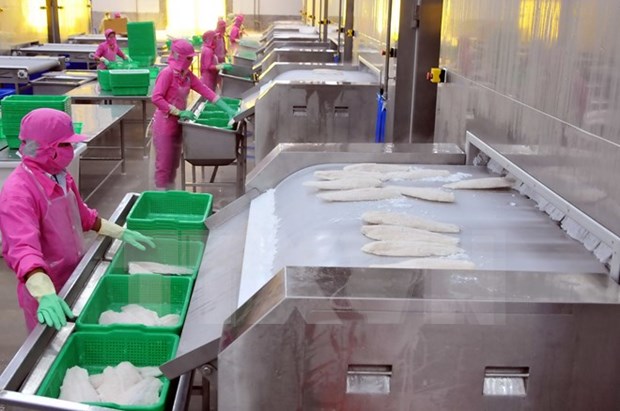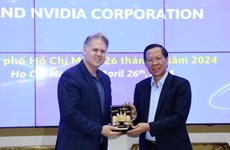AEC creates economically competitive bloc
The creation of the ASEAN Economic Community (AEC) as part of the three key pillars of the ASEAN Community aims to develop a stable, prosperous, highly competitive economic association.
 A production chain of tra fish (Photo: VNA)
A production chain of tra fish (Photo: VNA)It also looks to narrow socio-economic development gaps between member countries to enhance their competitive edge and lure external investment. The other two key pillars are the Political-Security Community and the Socio-Cultural Community.
The AEC itself was built with four pillars: a single market and production base, a competitive economic region, equitable economic development and integration with the global economy. A scorecard was formulated to track the members’ progress implementing the plans for the AEC.
ASEAN member states could enjoy a number of benefits following the establishment of the AEC such as rapid economic growth, more jobs, stronger foreign direct investment attraction, better resource allocation, and sharper production capacity and competitiveness.
The bloc’s leaders set an ambitious goal of developing ASEAN into a single market and production base characterised by a free flow of goods, services and investments, as well as free flow of capital and skilled labour.
ASEAN has moved to remove tariffs and non-tariff barriers, address customs and import-export procedures, complete regulations on product origins, and implement the Initiative for ASEAN Integration (IAI).
Once established, the AEC will play a crucial role in the bloc. It will connect partners in the ASEAN Free Trade Area (AFTA) and external economic partners to change regional architecture.
ASEAN countries have implemented important agreements to build the AEC such as the AFTA, ASEAN Trade in Goods Agreement (ATIGA), ASEAN Framework Agreement on Services (AFAS), ASEAN Investment Area (AIA), ASEAN Comprehensive Investment Agreement (ACIA), ASEAN Industrial Cooperation Scheme (AICO), and the Roadmap for Monetary and Financial Integration of ASEAN.
During the AEC building process, the association has reduced tariffs to between 0 and 5 percent for target products of 10 member countries between 2010 and 2015. The group has been implementing the ASEAN Framework on Equitable Economic Development (AFEED), as well.
Regarding expanding integration in the global economy, ASEAN has stepped up the implementation of free trade agreements (FTAs) with six major partners: China, Japan, the Republic of Korea, India, Australia, and New Zealand. It has also negotiated to build the Regional Comprehensive Economic Partnership (RCEP) agreement to create an open economic space in East Asia.
The AEC is expected to raise the bloc’s gross domestic product (GDP) by 7 percent by 2025 and create major changes in the Asian economic structure.-VNA












